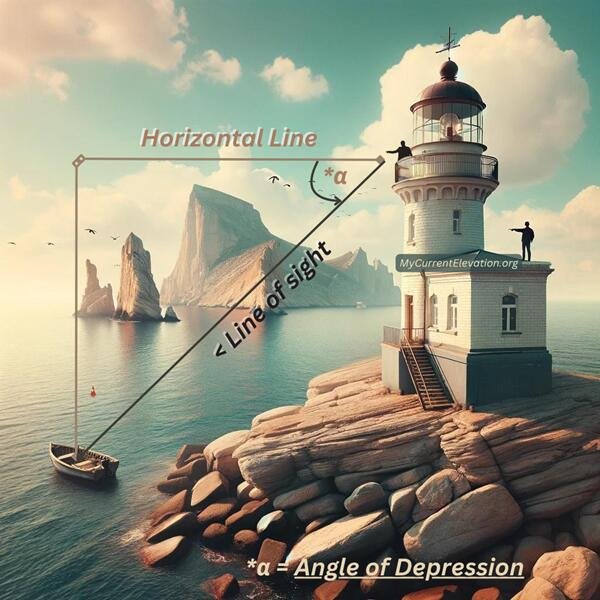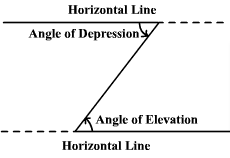Angle of Depression <
Degrees: 0°
Radians: 0 rad
How to use Angle of Elevation Calculator
To use our Angle of Depression tool, you are just required to input two values - Vertical Distance (Rise) and Horizontal Distance (Run), and that's it. Our tool will find out the gradient angle for you in radians and degrees.

Follow the steps below for more details -
- Step 1: Select the units for distance. First, you need to select the unit in which you will input the values of rise and run. As you will see, 'Miles' is selected by default. You can change it to - Kilometers, meters, and feet. The best part is that you can choose different units for rise and run.
- Step 2: Enter the Rise value, that is, the Vertical Distance.
- Step 3: Enter the Run value, that is, the Horizontal Distance.
- Step 4: Click on ‘Calculate’ button
What is Angle of Depression
The angle of depression is the angle formed between the horizontal line and the line of sight of an observer looking downwards at an object.
In simpler terms, it's the angle you create when you tilt your head down to look at something below you.
Here is an illustration:
Imagine you're standing at the top of a lighthouse looking down at a boat in the water.
The angle of depression is the angle between your direct line of sight down at the boat and the imaginary horizontal line that would extend straight out from your eyes if you were looking straight ahead, not down.
Also, the angle of depression from one point is equal to the angle of elevation from the opposite point, assuming the two points and the observer's eye form a right angle with the horizontal line.
So, this means the angle of depression and angle of elevation are congruent.

Angle of Depression Applications:
1. Navigation and Surveying
By measuring the angle of depression from a known height, surveyors can determine the distance to an object below them, such as a ship at sea or the base of a mountain. This helps them to create accurate maps and charts.
2. Construction and Engineering
Engineers can use the angle of depression to measure the height of a building or other structure from a known distance. So, it helps them to ensure that structures are built according to the given measurements.
3. Astronomy
Astronomers, the People who study stars and planets also use the angle of depression to see how high these objects are in the sky. This helps them know where the stars and planets are.
Other Applications:
- Forestry: People who work with forests measure how tall trees are using this angle.
- Archaeology: Archaeologists use it to figure out how deep down old structures are buried.
